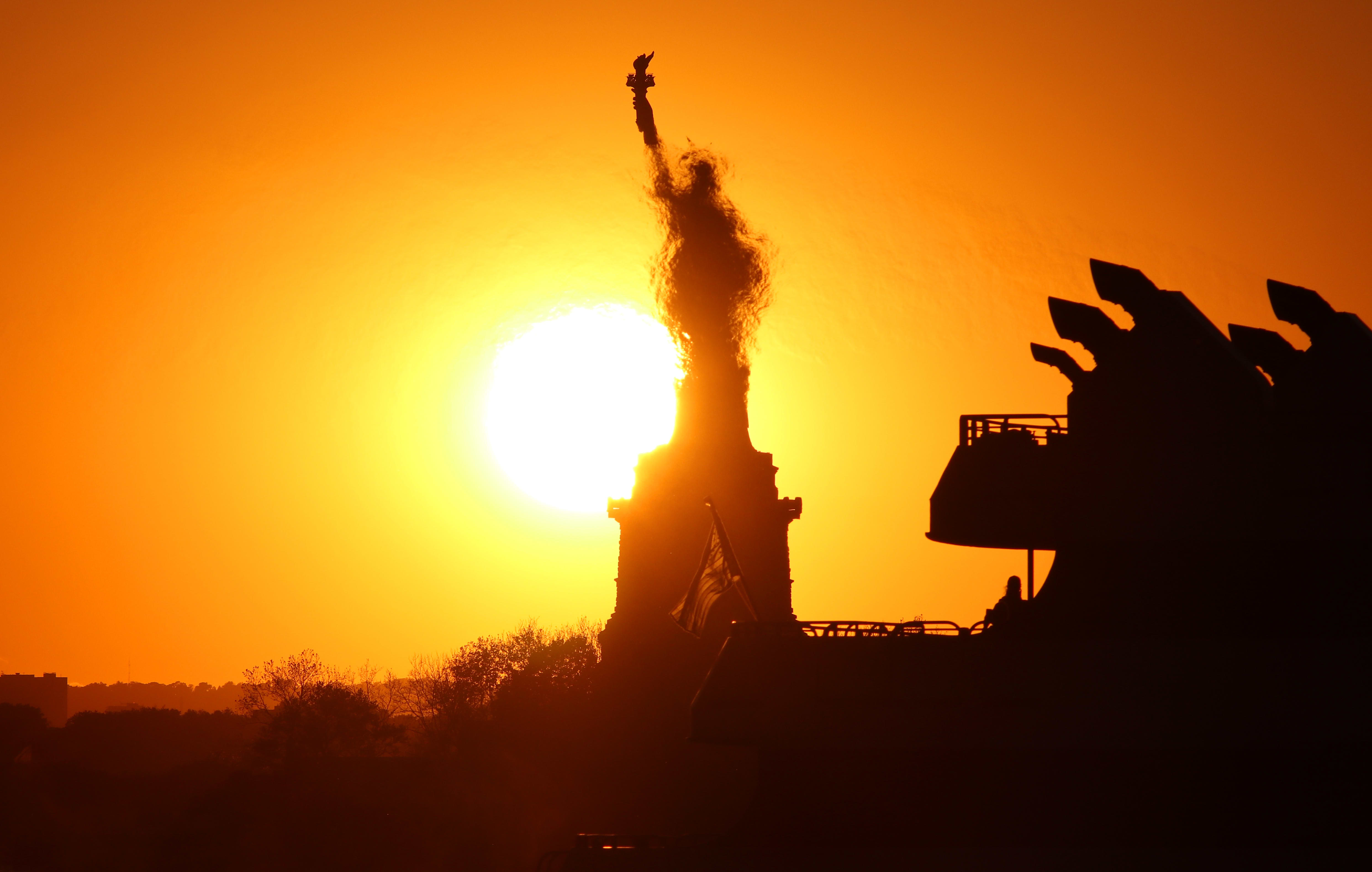People play in the spray from the fire hydrant. At the 3rd and Spruce Recreation Center in Reading Wednesday afternoon June 24, 2020 for the first Wacky Water Wednesday.
Ben Hasty | Reading Eagle | Getty Images
An intensifying heat dome is bringing sweltering heat to the U.S. this summer, with nearly 90% of the country’s population set to experience higher than 90 degree Fahrenheit temperatures this weekend.
Areas in Oklahoma hit heat indexes of over 115 degrees this week and New Orleans hit indexes of more than 120 degrees. In Texas, temperatures in Austin and San Antonio hit July records, and Houston hit 100 degrees with a heat index of 111 degrees. Phoenix also reached a blistering 111 degrees on Tuesday.
The National Oceanic and Atmospheric Administration has already warned of a scorching summer with high heat indexes from a mix of high temperatures and humidity, further exacerbating public health concerns as coronavirus cases surge in many states.
The extreme heat is due to a strong and persistent high pressure system sitting above the U.S, often called a heat dome. The high pressure air descends from above, compresses and heats up near land and makes worse already hot summer temperatures on Earth. Heat domes are likely to be more severe as the climate changes.
“It’s called a ‘dome’ because of its size and shape, and because the heat gets sort of trapped at the surface — because of the relentless descending of more air on top of it — which can result in the build-up of heat over days,” said Flavio Lehner, a climate scientist with the Institute for Atmospheric and Climate Science of the ETH Zurich.
The heat dome also inhibits the formation of clouds as the air descends. Clouds form when air lifts up and reaches cooler layers at higher levels in the atmosphere, and then cools and condenses. However, the dome creates an opposite effect in which the air descends and heats up instead ascending and cooling, creating a sunny sky with no cloud cover.
“Eventually, we’ll get a change in the weather pattern and the dome gets pushed out, but this particular situation is somewhat special in how slow-moving it is,” Lehner said.
The sun sets behind the Statue of Liberty as it is partially obscurred by heat waves from the exhaust of a passing ferry on May 31, 2020 in New York City.
Gary Hershorn | Getty Images
The heatwave also has some origins with the Siberian heat dome from June, which resulted in record heat that drifted into the Central Arctic and accelerated ice melt there, according to Judah Cohen, a climatologist with the analytics firm Atmospheric and Environmental Research.
“Normally these high pressure systems sit over the oceans such as the well-known Bermuda High,” Cohen said, referring to a subtropical area of high pressure in the North Atlantic Ocean that is intensifying as the planet warms. ”However, the Bermuda High is predicted to move West over the central U.S. and that will create this heat dome.”
The heatwave will put people most vulnerable to contracting the coronavirus at heightened risk of illness from high heat and humidity.
High humidity is also making the heat feel worse and is preventing temperatures from going down at night, creating problems for people who sleep without air conditioning.
“When you have a ‘heat dome’ … in the peak of summer, adding 5-10°F to typical high temperature immediately gets you into the 90s, near 100°F for a large population of the U.S.,” said BAM Weather Meteorologist Ryan Maue.
While roughly 90% of U.S. households have air conditioning, according to federal census figures, a disproportionate number of people who are low income or minorities don’t have it in their homes, the same demographic that is at most risk of contracting Covid-19.
Many cities typically have cooling centers for public use, but the coronavirus has created major health concerns of using such spaces and in some cases centers have been shut down during the pandemic.
2020 is set to be among the hottest 10 years ever recorded as climate change accelerates. 2019 was the second-hottest year ever, capping off the world’s hottest decade in recorded history.
